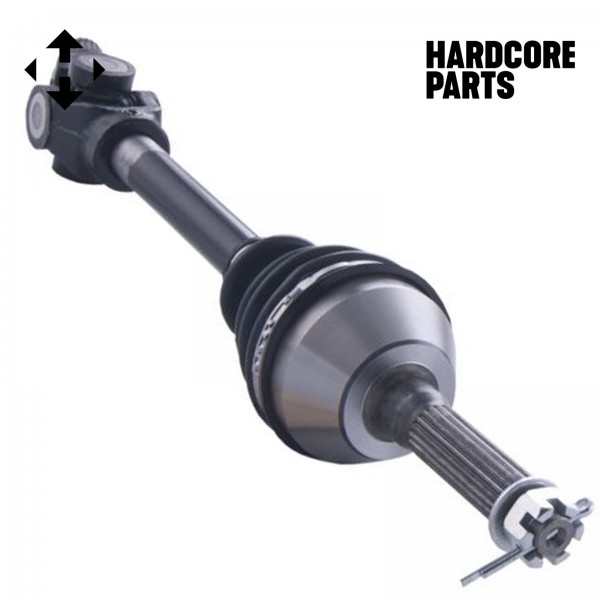Riding an ATV is a great experience that can be enjoyed by the entire family. It's exciting, and it teaches respect on many levels, including for the environment, habitat and even respect for others.It’s the most popular sport in USA.Good CV joint axles are essential for transferring the torque from the transmission to the drive wheels at a stable speed when you are riding your Yamaha Rhino.If not,it’s really a big headache.Have you known how to identify bad front axles or rear ones of your Polaris ranger ?
Signs of Failing Front or Rear Axle Shaft
1. Noise
Clicking or popping during tight turns indicates possible outboard cv joint damage.
2.Vibration
Shudder or clunking when accelerating or decelerating indicates possible inboard cv joint damage.This symptom is more apparent than clicking.Noise and vibration when cornering can just indicate a problem in the CV joint, which is a cheaper problem to cure, but it still needs to be dealt with promptly in case there is a larger issue at hand. It is much better to be vigilant with repairs than assuming the problem is minor, since a malfunction with a drive axle while driving could be dangerous. Also, when the axle is in very bad condition it will feel as if you’re driving a vehicle with a warped wheel.
3. Movement
With the vehicle jacked up and supported, move the drive axle up and down. There should be no excessive movement (no more than ½ inch or so). If you do feel movement, your drive axle is too worn and needs replacement as soon as possible. This is common especially when the vehicle has a great deal of mileage on the clock, typically more than 100,000 miles.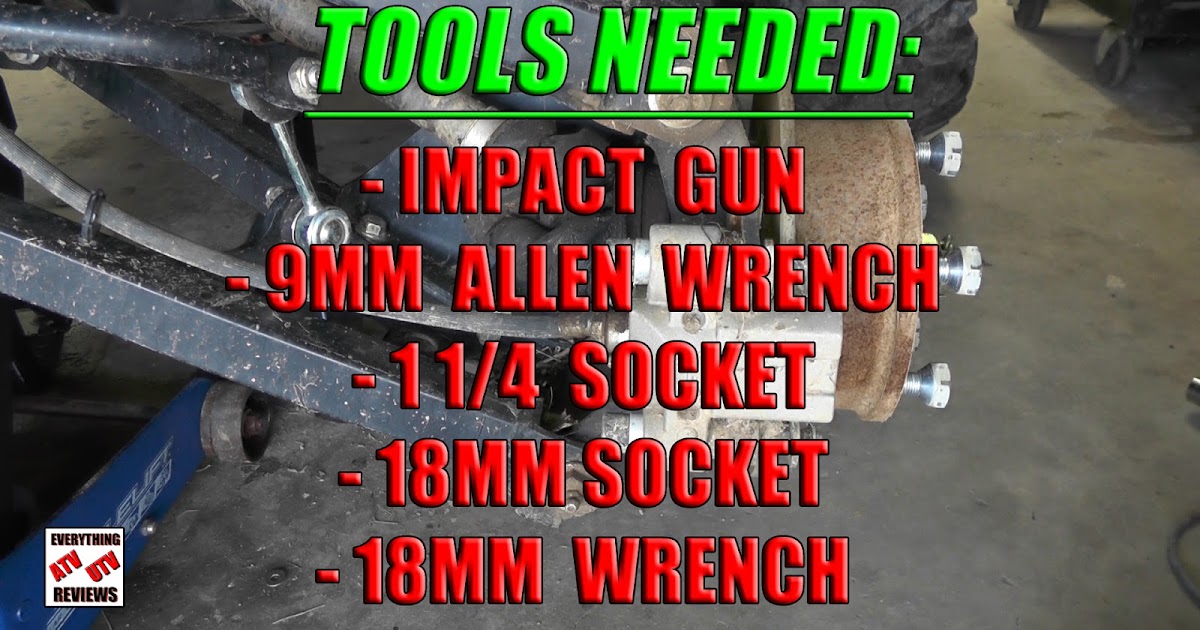
If you keep these three common symptoms in mind while driving, catching a drive axle problem early shouldn't be hard.
How can I replace my cv joint axles?
Before deciding to replace cv joint axles, look for defects in other associated components. If the related components show any signs of wear, such as boots,you could just buy more high-quality boots in you local repair shop then install them,it is better to replace the entire axle assembly.
Here are the steps to install axles:
1) Raise the end of the atv with jack stands; front end for front axle and rear end for rear axle.
2) Remove the axle nut in the wheel.
3) Uninstall the suspension and steering components.
4) Remove the shaft.
5) Install the axle.
6) Install the shaft, the suspension and steering components, and the axle nut back in their respective places.
If a CV joint itself is worn out, it cannot be repaired and it's time to replace a new one and takes about an hour to complete the installation.A brand new and high quality cv joint axle can be purchased at Amazon or another auto parts online stores such as hexautoparts ,buyautoparts ,carautoparts. They are for between $50.00 and $80.00 ,is it not very expensive,right ? Try them, deserve it.
Hope this article can help you how to identify axle are failing and need repair .More information about Automotive you can keep eyes on my blog, which aim to offer profession tutorials for most of people know automotive aftermarket. Also you can easily access a lot of information on car repair and maintenance here, fixing and repairing minor faults in vehicles is a norm.
Due to a worn out rear lower control arm bushing on the passengers side, and the drivers side one getting a wee bit sloppy, I replaced both lower control arms.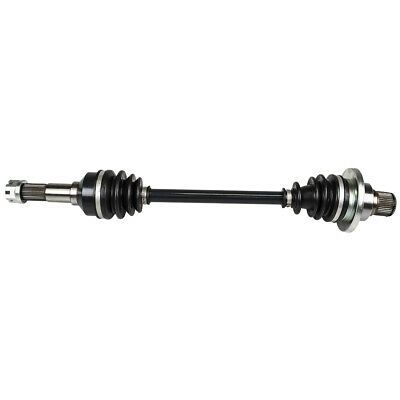 The local dealer wanted $495 to replace just the rear bushings alone (yea Canada), but I picked up a pair of chevy hhr lower control arms , complete with all bushings and the lower ball joint installed, from HexAutoParts in the US for $59 plus taxes. NOTE: If you are shopping for replacement Lower Control Arms you may find stamped steel ones being offered for the HHR - those may fit, but are actually for the Cobalt cars. The HHR's use cast ones, not stamped steel - the cast ones are definately recommended. Here is the process used along with a list of the tools used, as well the torque specs, and a few tips on the process: Tools: - 15 mm socket - 15 mm box end wrench - 16 mm socket - 13/16" socket - 6 inch extensions for the sockets - torque wrench - small pry bar - screwdriver - small
The local dealer wanted $495 to replace just the rear bushings alone (yea Canada), but I picked up a pair of chevy hhr lower control arms , complete with all bushings and the lower ball joint installed, from HexAutoParts in the US for $59 plus taxes. NOTE: If you are shopping for replacement Lower Control Arms you may find stamped steel ones being offered for the HHR - those may fit, but are actually for the Cobalt cars. The HHR's use cast ones, not stamped steel - the cast ones are definately recommended. Here is the process used along with a list of the tools used, as well the torque specs, and a few tips on the process: Tools: - 15 mm socket - 15 mm box end wrench - 16 mm socket - 13/16" socket - 6 inch extensions for the sockets - torque wrench - small pry bar - screwdriver - small
Read more
It's well known that Brake Pads are fast-moving consumer goods. You need to replace new sintered brake pads for your Suzuki GSXR 600 or Harley Davidson Street Glide when they wear out, which can be 6 months or 6 hours depending on the weather and location. Recently,more and more riders reflect that after installed sintered brake pads, for example Foreverun Sintered Brake Pads , there is a humming/grinding sort of noise when go to brake. Is it really caused by the sintered brake pads themselves ? The short answer is No.Even though you replaced with New EBC Sintered Brake Pads maybe also have this problem.How do we check in this case or ask a mechanic to take another look at it? Causes and How to Fix Grinding Noise After Replacing New Sintered Brake Pads There are a few reasons for grinding noise after replacing new sintered brake pads. 1. The sintered pads are new. When your brake pads are new they need a little bit of wearing in so they can function norm
You need to replace new sintered brake pads for your Suzuki GSXR 600 or Harley Davidson Street Glide when they wear out, which can be 6 months or 6 hours depending on the weather and location. Recently,more and more riders reflect that after installed sintered brake pads, for example Foreverun Sintered Brake Pads , there is a humming/grinding sort of noise when go to brake. Is it really caused by the sintered brake pads themselves ? The short answer is No.Even though you replaced with New EBC Sintered Brake Pads maybe also have this problem.How do we check in this case or ask a mechanic to take another look at it? Causes and How to Fix Grinding Noise After Replacing New Sintered Brake Pads There are a few reasons for grinding noise after replacing new sintered brake pads. 1. The sintered pads are new. When your brake pads are new they need a little bit of wearing in so they can function norm
Read more
2019-03-21 | Categories: How To Repair | Tags: atv axles technical help
The ATV and UTV become more popular vehicles in the USA recently, you can drive it on the field, trail, rock and mud to enjoy the fun, it’s really exciting sport.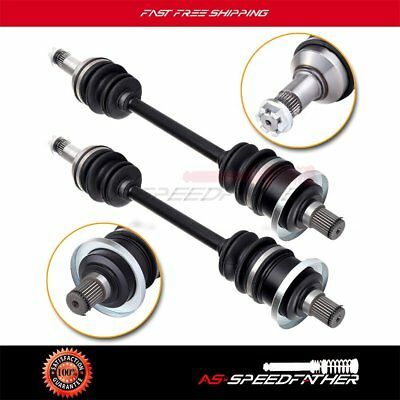 While, most of ATV parts are easier broken than the street car, such as Axle Shaft is the most common issues for the UTV/ATV driver.The Yamaha Rhino and Polaris Ranger as the most popular off-road vehicle, made to carry multiple people off the trail.Their are 4X4 vehicles, and they have an independent suspension with four individual axles. Do you want to know what's polaris ranger axle problems or when you need to replace Yamaha Rhino and Polaris Ranger CV Axle Shaft?
While, most of ATV parts are easier broken than the street car, such as Axle Shaft is the most common issues for the UTV/ATV driver.The Yamaha Rhino and Polaris Ranger as the most popular off-road vehicle, made to carry multiple people off the trail.Their are 4X4 vehicles, and they have an independent suspension with four individual axles. Do you want to know what's polaris ranger axle problems or when you need to replace Yamaha Rhino and Polaris Ranger CV Axle Shaft?
When a drive axle fails completely, it can leave you deadlocked in the streets. Knowing about the problems and symptoms of drive axles can be helpful if you run into any issues or find any indications of failure.
CV axles will fail for many reasons, one being wear and tear. If you have a 1995 Honda Rancher and you’ve never done anything to it then don't be surprised if things start failing. Not needing to work on your ATV doesn't mean it doesn't need maintenance. CV axles will also fail due to torn boots allowing mud, sand, water and any other foreign particles inside where they’re ground up at each rotation.
Not needing to work on your ATV doesn't mean it doesn't need maintenance. CV axles will also fail due to torn boots allowing mud, sand, water and any other foreign particles inside where they’re ground up at each rotation.
Signs of a Damaged CV Axle Shaft You Need To Know
1.Grease filled around the CV joint can seep out of them when the rubber boots are cracked or broken. Over time, the grease can spread out to the area inside the wheel rim.
2. You need pay more attention on clunking sound.When you put your car in gear you will likely hear a sudden sputtering or clunking noise as the vehicle struggles to get power in order to move forward if your axle is damaged or in need of some sort of repair. This is because the transmission won't be able to properly transfer engine power through the drive line to the axles to wheels.
3. A humming or growling noise is emitted due to a lack of lubrication in the CV joint.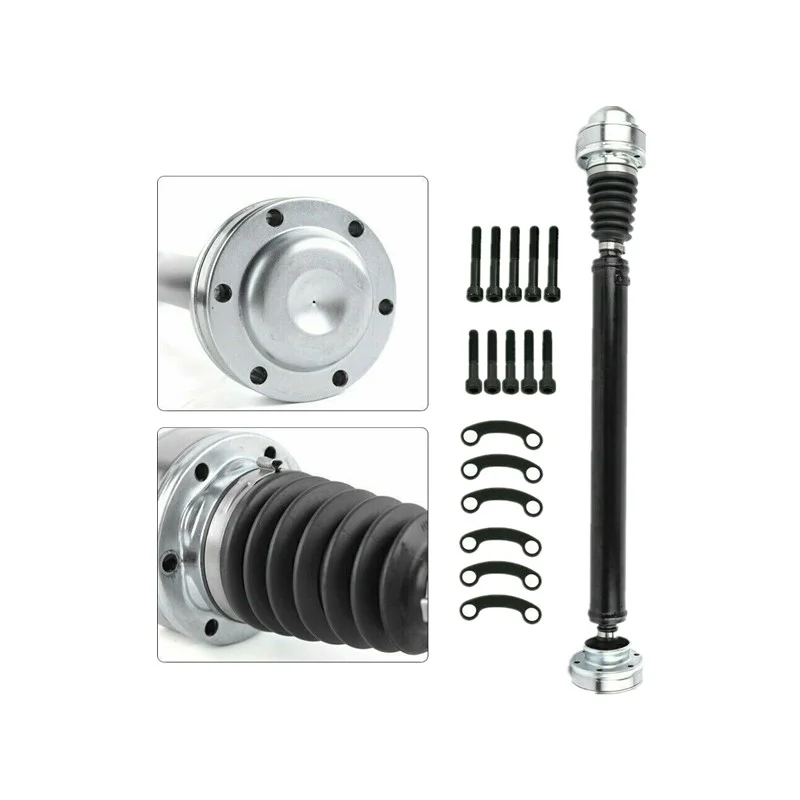 A steady knocking while driving at low speeds is also an indication of a bad CV joint.
A steady knocking while driving at low speeds is also an indication of a bad CV joint.
4.If your vehicle will not move, it may be some axle trouble.This is likely because the axle has snapped at the universal joint. When you hit the gas your engine will only rev and you will not move forward.
5.When your vehicle shudders while accelerating, it indicates a fault in the inner CV joints.
HOW TO SAVE MONEY ON ATV CV JOINT REPAIR?
The main way of saving money on CV joint repair is to simply replace the half shaft itself, and choose a reliable online store to buy cheap and high quality cv axle shaft.You can shop around online and in person to get the best possible quote from the garages in your local area, so taking the time to compare estimates can save you money. HexAutoParts.com stocks high-quality front axles, rear axles drive axle kits. In our site, you can locate parts of your choice by entering your car's year, make and model.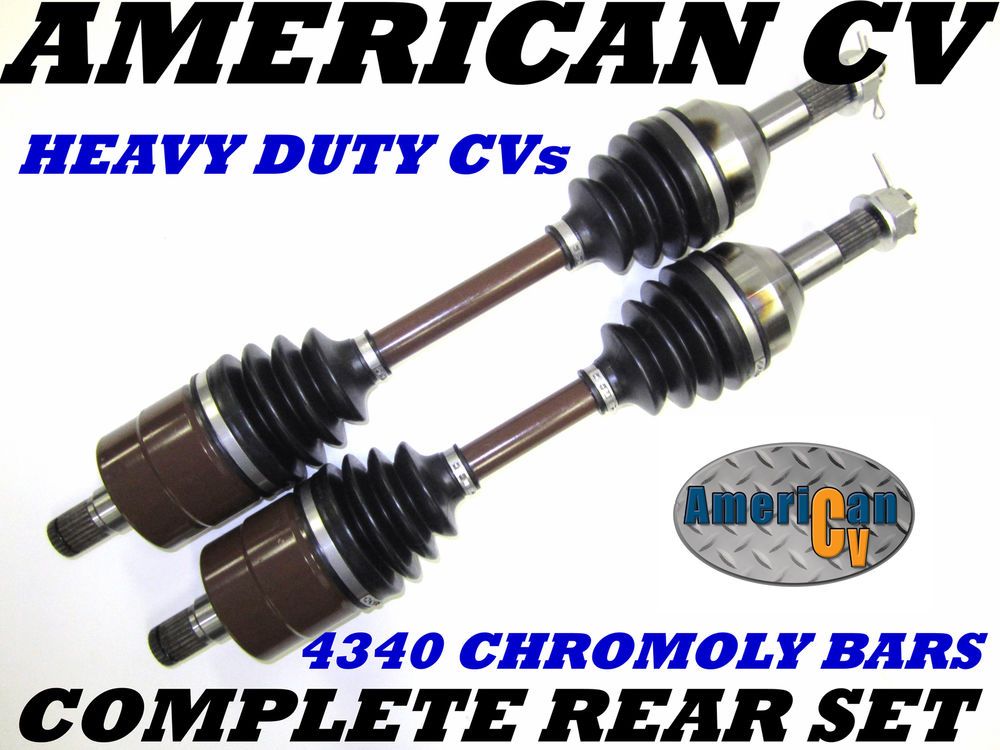 Your part's OEM number can also be used to find the appropriate fit for your vehicle.
Your part's OEM number can also be used to find the appropriate fit for your vehicle.
If you want to get the CV Axle Shaft replacement tutorials you can keep eyes on our blog, we have professional repair guide CV Axle Install .Hex Auto Parts is one of the best place online to get replacement ATV parts that come with a warranty at competitive prices. We stock a wide range of OEM replacement and aftermarket parts for popular make and model. To find the right auto part for your car or motorcycle, simply tell us your car's year, make and model. Your order will be shipped from our TX warehouse to your location. HexAutoParts always offer free shipping for everyone here. Our products have been tested to meet or exceed industry standards. You can reach us on our support line at or leave us an email at [email protected], If you need help in choosing the part. Please feel free to leave us an online review. We value your feedback!
Prev: Good Thing to use A/C Compressor in Winter - Why we should Run Auto Air Conditioner in Winter?
Next: How to Choose Correct Wheel Spacer for Truck, Car and Jeep - What Size Wheel Spacer You Need
Every year ATVs (or all-terrain vehicles, ATV) are becoming more and more popular in our country. Interest in this light off-road vehicle is growing among both athletes and outdoor enthusiasts, which serves the rapid development of various areas of quadsports and quad tourism. As you know, demand creates supply, and a variety of ATVs flooded the market, differing in engine power, layout, drive system and a number of other parameters. How to navigate this variety "How to determine which model is best for your purposes, and which model is not suitable at all" In order for the choice to be made consciously, it is necessary, first of all, to determine what you need the ATV for. But the very first question that you need to answer yourself is the question of whether you are going to ride an ATV with a passenger. If you rule out riding together in principle, then you can choose both single and double models. Both of them have their own advantages and disadvantages.
Interest in this light off-road vehicle is growing among both athletes and outdoor enthusiasts, which serves the rapid development of various areas of quadsports and quad tourism. As you know, demand creates supply, and a variety of ATVs flooded the market, differing in engine power, layout, drive system and a number of other parameters. How to navigate this variety "How to determine which model is best for your purposes, and which model is not suitable at all" In order for the choice to be made consciously, it is necessary, first of all, to determine what you need the ATV for. But the very first question that you need to answer yourself is the question of whether you are going to ride an ATV with a passenger. If you rule out riding together in principle, then you can choose both single and double models. Both of them have their own advantages and disadvantages.
The main advantages of single-seat models are "lighter weight, smaller turning radius and conditionally higher ground clearance (smaller wheelbase with equal ground clearance). All this provides a slightly better ATV cross-country ability (first of all, geometric cross-country ability) in dense forests, streams and heavy swamps. That is why single-seat models are preferred by most athletes participating in trophy raids and other similar competitions.
All this provides a slightly better ATV cross-country ability (first of all, geometric cross-country ability) in dense forests, streams and heavy swamps. That is why single-seat models are preferred by most athletes participating in trophy raids and other similar competitions.
The main advantages of two-seat models, regardless of the number of riders » more predictable handling and smoothness on uneven surfaces, greater ride comfort over bumps, cornering stability at speed, and increased rollover resistance (especially on mountain slopes, hills and ravines) . However, the main advantage of two-seater models is the ability to safely ride with a passenger and cargo, as well as with a larger load when driving an ATV without a passenger.
Many vendors now offer special conversion kits for converting single-seat ATVs to two-seat ATVs. You can also be offered the so-called "pseudo-double" or "one and a half" models. Let's figure out what it is, and how such options differ from really double models.
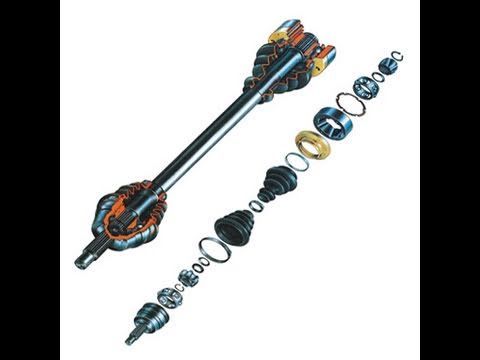 The 2-seat ATV Conversion Kit is a passenger seat with mounting hardware. This seat is installed behind the driver's seat. A "pseudo-two-seat" model is a single-seat model with an extended seat relatively large enough to accommodate two people, and sometimes additional passenger footrests and backrest. In both cases, the passenger seat is either located above the rear axle or is offset behind the rear axle. A true two-seat ATV model is structurally arranged in such a way that both the driver and the passenger, sitting in their regular places, are located in the base between the front and rear axles of the ATV. For such an arrangement of two people between the axles of the ATV, more space is required than for one person. Therefore, the wheelbase of two-seat models is longer compared to single-seat models. Consider why this is important and how important it is.
The 2-seat ATV Conversion Kit is a passenger seat with mounting hardware. This seat is installed behind the driver's seat. A "pseudo-two-seat" model is a single-seat model with an extended seat relatively large enough to accommodate two people, and sometimes additional passenger footrests and backrest. In both cases, the passenger seat is either located above the rear axle or is offset behind the rear axle. A true two-seat ATV model is structurally arranged in such a way that both the driver and the passenger, sitting in their regular places, are located in the base between the front and rear axles of the ATV. For such an arrangement of two people between the axles of the ATV, more space is required than for one person. Therefore, the wheelbase of two-seat models is longer compared to single-seat models. Consider why this is important and how important it is. When the ATV is moving in a straight line at a constant speed on a flat horizontal surface, all four wheels of the ATV are approximately evenly supported on the ground.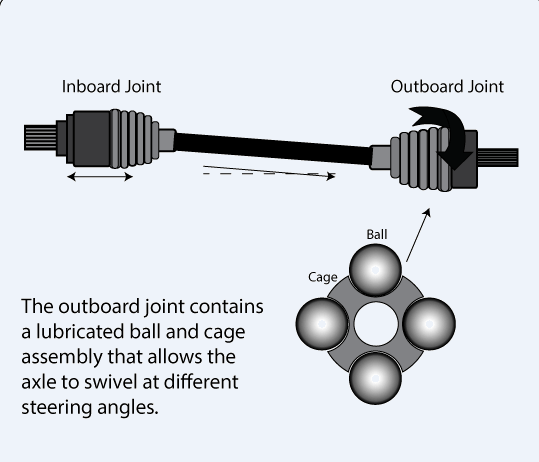 When accelerating the ATV, the front wheels are unloaded and the rear wheels are loaded in proportion to the acceleration. The torque transferred from the engine to the wheels tends to cause the ATV to roll backwards. If your passenger is "in the base" (in front of the rear axle), then the weight of his body works to counteract this tendency the more the passenger is further from the rear axle. At the same time, the greater its weight, the more effectively the tendency to overturn is neutralized. If the passenger is above the rear axle, then his weight is neutral to the tendency to overturn. If the passenger is behind the rear axle, then his weight increases the moment of forces, increasing the tendency to overturn the more, the greater the weight of the passenger, and the farther he is from the rear axle.
When accelerating the ATV, the front wheels are unloaded and the rear wheels are loaded in proportion to the acceleration. The torque transferred from the engine to the wheels tends to cause the ATV to roll backwards. If your passenger is "in the base" (in front of the rear axle), then the weight of his body works to counteract this tendency the more the passenger is further from the rear axle. At the same time, the greater its weight, the more effectively the tendency to overturn is neutralized. If the passenger is above the rear axle, then his weight is neutral to the tendency to overturn. If the passenger is behind the rear axle, then his weight increases the moment of forces, increasing the tendency to overturn the more, the greater the weight of the passenger, and the farther he is from the rear axle.
As soon as the ATV's front wheels start to lift off the ground, the position of your body and the passenger's body relative to the rear axle will shift. If both of you are in base, then you have more time to react and take corrective action before the ATV rollover becomes irreversible.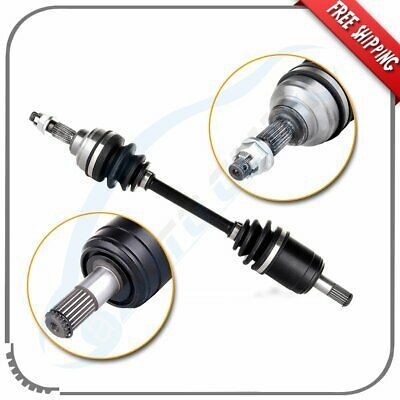 If at the moment of separation of the front wheels the passenger is above the rear axle, then the position of his body is immediately behind the rear axle, "working" on the tendency to overturn. If the passenger was initially behind the rear axle, then his weight initially increased the tendency to roll over, partially compensating for your weight acting against rollover. When the front wheels come off, the effect of your body weight against rollover is weakened (because the distance from its center of gravity to the rear axle is reduced), and the effect of the passenger's weight aimed at turning over the ATV will increase dramatically (because the distance from its center of gravity to the rear axle increases) . But so far we have considered only movement on a flat horizontal surface. If you are driving up a slope, your body position and the position of the passenger's body relative to the rear axle are already shifted back, which greatly exacerbates the tendency to overturn. In addition, any bump or other unevenness will sharply affect the front wheels, throwing the front of the ATV up, and rapidly increasing the tendency to overturn.
If at the moment of separation of the front wheels the passenger is above the rear axle, then the position of his body is immediately behind the rear axle, "working" on the tendency to overturn. If the passenger was initially behind the rear axle, then his weight initially increased the tendency to roll over, partially compensating for your weight acting against rollover. When the front wheels come off, the effect of your body weight against rollover is weakened (because the distance from its center of gravity to the rear axle is reduced), and the effect of the passenger's weight aimed at turning over the ATV will increase dramatically (because the distance from its center of gravity to the rear axle increases) . But so far we have considered only movement on a flat horizontal surface. If you are driving up a slope, your body position and the position of the passenger's body relative to the rear axle are already shifted back, which greatly exacerbates the tendency to overturn. In addition, any bump or other unevenness will sharply affect the front wheels, throwing the front of the ATV up, and rapidly increasing the tendency to overturn.
In real life, we rarely ride an ATV on a flat horizontal surface. Typically, riding is rough terrain with short or long slopes, potholes, bumps and other obstacles, which causes a whole combination of superimposed forces, so we constantly try to compensate for the tendency to roll over by changing the position of our body. But this requires freedom of movement of the body relative to the ATV. When riding a single-seat ATV with two people, this freedom is significantly limited due to the limited space between the axles of the front and rear wheels, which greatly hinders the timely corrective actions necessary to keep the ATV stable on uneven ground. And it’s almost impossible to jump off an overturning single-seat ATV in time when the two of you are on it.
Based on the foregoing, it is quite obvious that neither by lengthening the seat nor by installing an additional seat can a two-seater ATV be made from a single ATV. So why, in this case, such kits are sold "Why do some manufacturers of ATVs write in the characteristics of a single ATV that it is a two-seater or "one and a half seater"" After all, by doing this they mislead the consumer, exposing people's lives to serious danger! It is important to understand that the sociability and eloquence of the seller can change your attitude to the issue, but cannot change the laws of physics!
And to distinguish a real two-seater ATV from various "pseudo" and "one and a half" is very simple: the length of the wheelbase of a real two-seater ATV cannot be less than 1440 mm , otherwise the passenger will inevitably be behind the projection of the rear axle.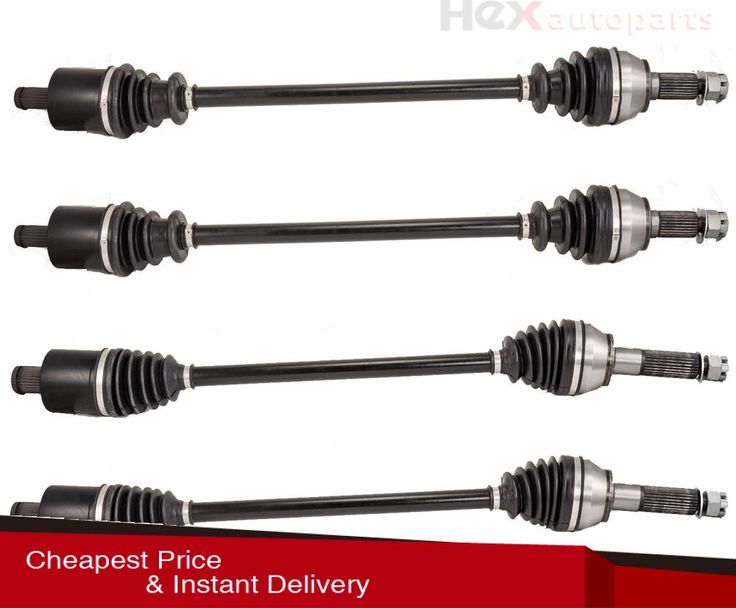
Summing up all that has been said, we can say with confidence that riding an ATV together requires increased attention, special care and sufficient skills, both from the driver and the passenger. It must be clearly understood that riding a single ATV with a passenger - no matter how the seller presents it - one and a half seat, pseudo-double, or "for 1-2 people" - is complete recklessness.
From time to time the quad is acting up and not behaving as you would like. Nothing beautiful lasts forever, right?
One of the most common faults you may encounter is the ATV suddenly pulling to the left or right.
If you're lucky, your problem may have a simple solution)
Let's take a look at some of the most common causes of ATV pulling to the side, and of course, here we'll talk about how to get rid of these problems.
The most common problem that causes the ATV to pull to one side is the difference in rolling resistance due to different tire pressures. Also, the problem may be associated with natural wear or damage to various components of the chassis of the ATV and, as a result, a violation of the angle of the wheels.
So how do you determine what is causing problems when riding an ATV?
As you probably already understood, there can be several reasons.
To understand why an ATV wants to pull off the road and dive into a ditch when you really don't want to, you need to do a number of checks.
Although I don't have exact statistics to tell you which malfunction occurs most often, I still recommend that you start with what is easiest to check and fix before spending time and money on more non-standard and potentially more complex searches.
In my experience, the most common cause, and by far the easiest problem to check and fix, is uneven ATV tire pressures.
Let's look at what happens when ATV tires have different pressures.
A flat tire has a larger area of contact with the road surface than a normally inflated wheel, as a result of which the friction force, and hence the rolling resistance force, applied to such a wheel will be higher. The wheel will roll more slowly. The opposite wheel will run ahead and try to turn the ATV around the slow wheel. That is, if the ATV pulls, for example, to the left side, most likely, the fact is that the left wheel is lowered.
To solve this problem, you need to equalize the air pressure in the ATV tires. It is best to refer to the operating instructions, which must indicate the required air pressure in the wheels recommended by the manufacturer. The pressure in the wheels installed on the same axle of the ATV must be the same.
At the same time, you should be aware that due to the design features and weight distribution of the ATV, the tire pressure on the front and rear axles may differ.
Check with a good tire pressure sensor.
Most manufacturers complete the ATVs with a set of tools and a sensor for checking air pressure in wheels, for example, ATVs Yacota SELA 200 , Yacota SELA 150 , Yacota Cabo 200020, LD , , MOTAX 200 , MOTAX GRIZLIK and MOTAX RAPTOR .
ATVs MOTAX and YACOTA have these sensors in the standard tool kit. If there is no such device in your kit, I recommend that you definitely purchase it. A very slight difference in air pressure in the tires may well be the reason that the ATV pulls to the side when driving in a straight line.
The air pressure should be checked in both the front and rear tires. True, uneven pressure in the rear tires, most likely, will not be the reason for the withdrawal of the ATV from a straight path. Different pressure in the rear tires can provoke another malfunction - premature wear of the rear differential, due to the increased load on it. But this is a story for a separate review.
Different pressure in the rear tires can provoke another malfunction - premature wear of the rear differential, due to the increased load on it. But this is a story for a separate review.
I always keep this inexpensive instrument in my tool kit, its accuracy is good enough to use.
Also make sure that the maximum tire pressure is not exceeded.
Over time, ATV wheels can wear differently, resulting in the diameter of one wheel being different from the diameter of another wheel. This can also cause the ATV to pull to the side.
To check if the front wheel diameters are the same, you can do a simple check: place the ATV on a level surface and use chalk to make a mark on the sidewall of each front tire at the lowest point.
Wheels must be pointing straight ahead, gear lever in neutral position. Roll the ATV forward until one of the wheels has made two or three revolutions and the mark you just made is back to the very bottom, to its original position. Look at the mark on the opposite tire. Ideally, it should also be at the very bottom. If this is not the case, the wheel circumferences do not match.
Ideally, it should also be at the very bottom. If this is not the case, the wheel circumferences do not match.
If the reason for the ATV pulling to the side lies in the difference in wheel circumference, then when driving to the right, the right tire should have a smaller circumference, and when driving to the left, the left one.
The circumference of the wheels can differ not only due to uneven wear, but also due to the difference in air pressure in the tires.
The wheel is like a balloon, the higher the pressure, the larger its diameter and vice versa.
For this operation, you need to lift the ATV, put it steadily on the supports so that all the wheels are in a suspended state.
It is very convenient to use a motorcycle stand to lift the ATV. If you do not have them yet, and you plan to service the ATV yourself, I recommend purchasing them. They are relatively inexpensive. Tackles will greatly simplify the ATV maintenance process.
Tackles will greatly simplify the ATV maintenance process.
Check that there is no excessive play in the ATV suspension and steering joints. Start with the tie rods and steering rack. This operation is more convenient to carry out with an assistant. Have an assistant move the ATV handlebars to the right and left, often and with a small range of motion. And you, in turn, keep your hand on the swivel, which are subject to verification. Check the steering tips and tie rods one by one. You will feel the excess play in the hinge with your hand. If the ATV steering wheel has excessive play, but the tie rod and steering tip are in order, then the steering rack itself or the steering shaft bushing may have play, which can also be checked by hand. The steering column bushing usually wears out over time. The same goes for the ball joints on the tie rods.
Tighten any loose bolts and replace worn parts. Worn parts can break soon, so replacing them won't be a waste of money, even if their wear isn't the reason your ATV pulls to one side.
In addition, the wheel bearings must be checked for excessive play.
To do this, have a helper grab the top and bottom of the wheel and shake it while you check for play in the ball joints and wheel bearings.
Check how easy the wheels turn. The wheels should rotate freely, without noise and crackling. The presence of noise indicates wear on the hub bearing. And the tight running of the wheel is about bearing wear or souring of the brake pads. As we said, if one of the ATV's wheels is spinning at a slower speed than the other wheel, the ATV will pull towards the slow wheel.
If necessary, replace the bearings and service the front brake calipers. Sometimes the caliper is easy enough to clean, and sometimes you can’t do without replacing the brake cylinders or the caliper bracket itself.
Finish with suspension lubrication. The running gear of ATV brands YACOTA , MOTAX , AVANTIS is equipped with special grease fittings through which you can easily lubricate the desired suspension unit. We have already told, in one of the reviews, using the example of a gasoline 125 cc ATV MOTAX T-REX , about the features of maintenance of the ATV suspension. Regular maintenance of your ATV will definitely prolong its life.
We have already told, in one of the reviews, using the example of a gasoline 125 cc ATV MOTAX T-REX , about the features of maintenance of the ATV suspension. Regular maintenance of your ATV will definitely prolong its life.
Control check three: checking the running gear for geometry violations.
If you use the ATV for active riding or sports, then it is possible that you have bent some part of the suspension on the next jump. ATV front suspension A-arms are especially prone to damage if you hit a stump or rock while riding. "Fast-growing" trees suddenly appearing in front of the ATV as you drive, a common story!)
A-arms are designed to absorb heavy suspension shocks and, through their integrity, retain more expensive and hard-to-find ATV parts that are more difficult, more expensive or even impossible to repair, for example, an ATV frame. It is not always easy to see if the suspension arm is bent or not. It happens that the levers do not have a symmetrical shape, because the ATV suspension was originally designed this way by the manufacturer.